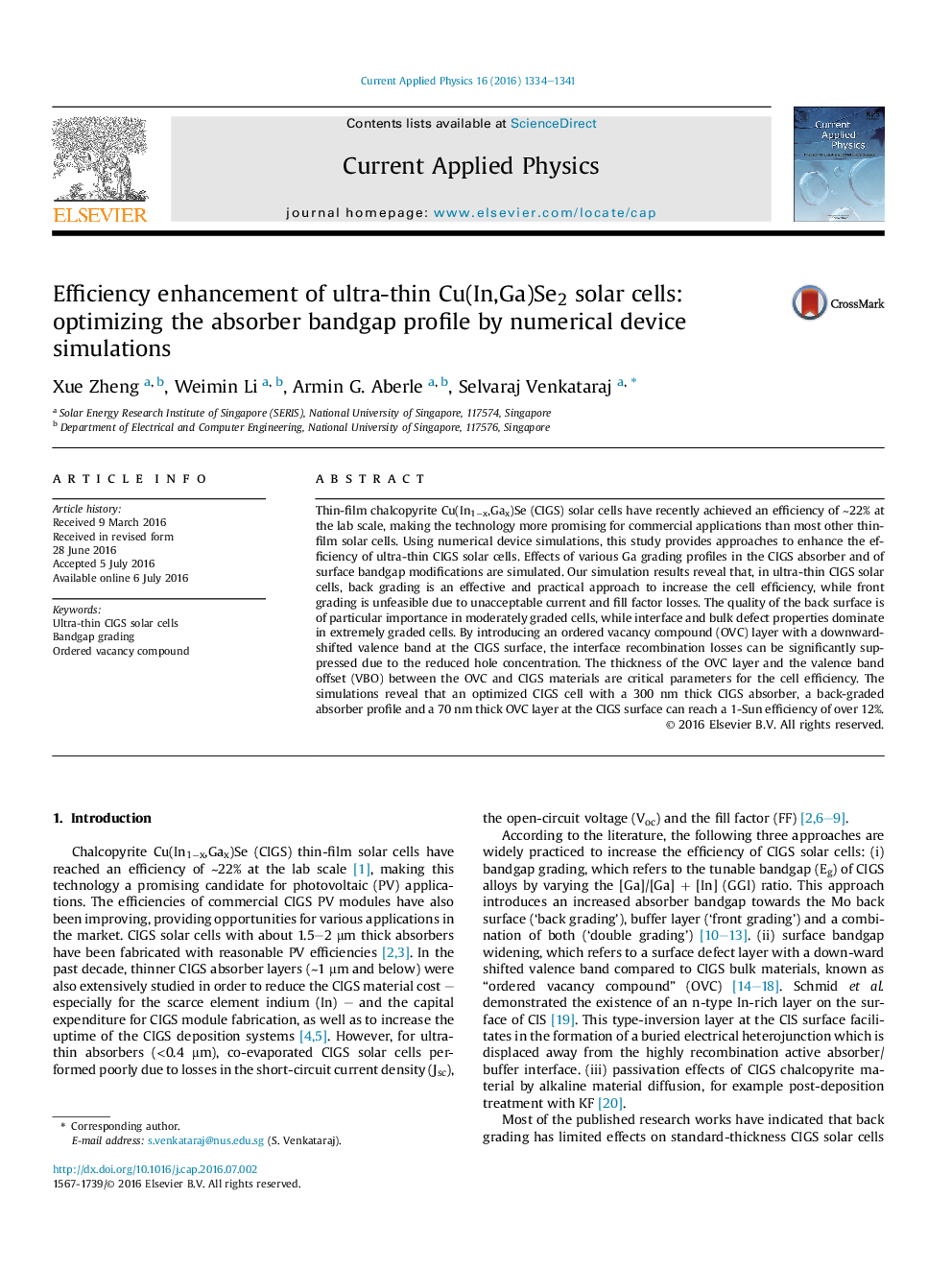| کد مقاله | کد نشریه | سال انتشار | مقاله انگلیسی | نسخه تمام متن |
|---|---|---|---|---|
| 1785457 | 1023381 | 2016 | 8 صفحه PDF | دانلود رایگان |

• Numerical simulations of different absorber bandgap pofiles, as well as OVC layers with varied thickness and VBO.
• Comparisons between effects of bandgap grading on ultra-thin and standard-thickness CIGS solar cells.
• Recombination path analysis for back- and front-graded CIGS solar cells.
• The optimized CIGS solar cell with a 300 nm thick absorber layer reaches a 1-Sun efficiency of 12.4%.
Thin-film chalcopyrite Cu(In1−x,Gax)Se (CIGS) solar cells have recently achieved an efficiency of ∼22% at the lab scale, making the technology more promising for commercial applications than most other thin-film solar cells. Using numerical device simulations, this study provides approaches to enhance the efficiency of ultra-thin CIGS solar cells. Effects of various Ga grading profiles in the CIGS absorber and of surface bandgap modifications are simulated. Our simulation results reveal that, in ultra-thin CIGS solar cells, back grading is an effective and practical approach to increase the cell efficiency, while front grading is unfeasible due to unacceptable current and fill factor losses. The quality of the back surface is of particular importance in moderately graded cells, while interface and bulk defect properties dominate in extremely graded cells. By introducing an ordered vacancy compound (OVC) layer with a downward-shifted valence band at the CIGS surface, the interface recombination losses can be significantly suppressed due to the reduced hole concentration. The thickness of the OVC layer and the valence band offset (VBO) between the OVC and CIGS materials are critical parameters for the cell efficiency. The simulations reveal that an optimized CIGS cell with a 300 nm thick CIGS absorber, a back-graded absorber profile and a 70 nm thick OVC layer at the CIGS surface can reach a 1-Sun efficiency of over 12%.
Journal: Current Applied Physics - Volume 16, Issue 10, October 2016, Pages 1334–1341